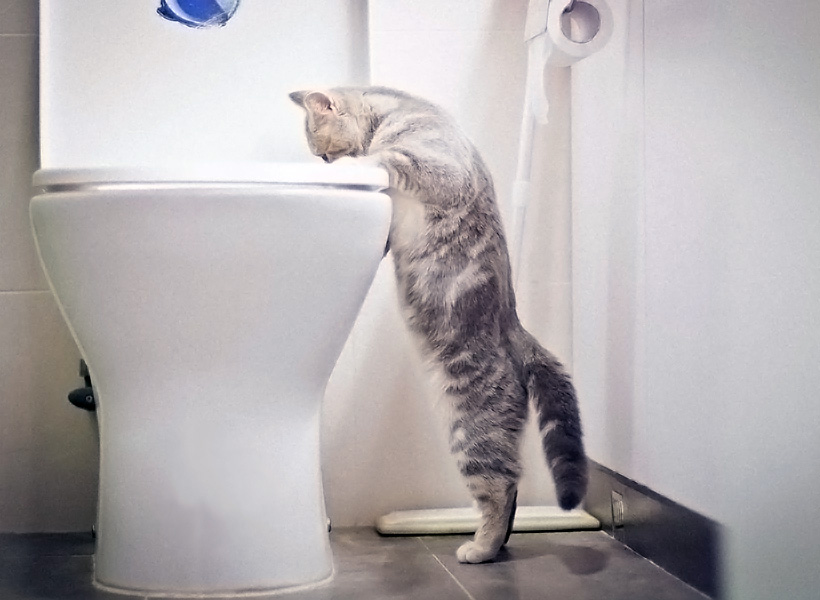Hazards of Flushing Cat Poop Down Your Toilet - Prevent Possible Problems
Hazards of Flushing Cat Poop Down Your Toilet - Prevent Possible Problems
Blog Article
They are making several great observations on the subject of How to Dispose of Cat Poop and Litter Without Plastic Bags overall in this post directly below.

Intro
As feline proprietors, it's necessary to bear in mind exactly how we dispose of our feline good friends' waste. While it may seem hassle-free to flush pet cat poop down the toilet, this practice can have detrimental consequences for both the atmosphere and human health.
Ecological Impact
Purging pet cat poop introduces hazardous microorganisms and parasites right into the water supply, posturing a significant risk to marine ecosystems. These pollutants can negatively affect aquatic life and concession water high quality.
Health Risks
Along with ecological problems, flushing feline waste can likewise posture wellness risks to human beings. Cat feces may consist of Toxoplasma gondii, a bloodsucker that can cause toxoplasmosis-- a potentially severe health problem, specifically for pregnant women and individuals with damaged immune systems.
Alternatives to Flushing
Luckily, there are more secure and much more accountable ways to deal with feline poop. Consider the following options:
1. Scoop and Dispose in Trash
The most usual approach of dealing with feline poop is to scoop it right into an eco-friendly bag and throw it in the garbage. Be sure to use a devoted trash inside story and dispose of the waste quickly.
2. Usage Biodegradable Litter
Choose eco-friendly cat trash made from products such as corn or wheat. These clutters are environmentally friendly and can be safely gotten rid of in the garbage.
3. Hide in the Yard
If you have a lawn, take into consideration hiding pet cat waste in a marked location far from veggie gardens and water sources. Be sure to dig deep enough to prevent contamination of groundwater.
4. Install a Pet Waste Disposal System
Invest in a pet waste disposal system especially made for pet cat waste. These systems make use of enzymes to break down the waste, reducing odor and ecological influence.
Final thought
Accountable animal ownership extends beyond giving food and sanctuary-- it additionally includes correct waste administration. By refraining from flushing pet cat poop down the commode and selecting alternate disposal methods, we can decrease our ecological impact and safeguard human health.
Why Can’t I Flush Cat Poop?
It Spreads a Parasite
Cats are frequently infected with a parasite called toxoplasma gondii. The parasite causes an infection called toxoplasmosis. It is usually harmless to cats. The parasite only uses cat poop as a host for its eggs. Otherwise, the cat’s immune system usually keeps the infection at low enough levels to maintain its own health. But it does not stop the develop of eggs. These eggs are tiny and surprisingly tough. They may survive for a year before they begin to grow. But that’s the problem.
Our wastewater system is not designed to deal with toxoplasmosis eggs. Instead, most eggs will flush from your toilet into sewers and wastewater management plants. After the sewage is treated for many other harmful things in it, it is typically released into local rivers, lakes, or oceans. Here, the toxoplasmosis eggs can find new hosts, including starfish, crabs, otters, and many other wildlife. For many, this is a significant risk to their health. Toxoplasmosis can also end up infecting water sources that are important for agriculture, which means our deer, pigs, and sheep can get infected too.
Is There Risk to Humans?
There can be a risk to human life from flushing cat poop down the toilet. If you do so, the parasites from your cat’s poop can end up in shellfish, game animals, or livestock. If this meat is then served raw or undercooked, the people who eat it can get sick.
In fact, according to the CDC, 40 million people in the United States are infected with toxoplasma gondii. They get it from exposure to infected seafood, or from some kind of cat poop contamination, like drinking from a stream that is contaminated or touching anything that has come into contact with cat poop. That includes just cleaning a cat litter box.
Most people who get infected with these parasites will not develop any symptoms. However, for pregnant women or for those with compromised immune systems, the parasite can cause severe health problems.
How to Handle Cat Poop
The best way to handle cat poop is actually to clean the box more often. The eggs that the parasite sheds will not become active until one to five days after the cat poops. That means that if you clean daily, you’re much less likely to come into direct contact with infectious eggs.
That said, always dispose of cat poop in the garbage and not down the toilet. Wash your hands before and after you clean the litter box, and bring the bag of poop right outside to your garbage bins.
https://trenchlesssolutionsusa.com/why-cant-i-flush-cat-poop/

I was made aware of that write-up on Can You Flush Cat Poop Down The Toilet? from someone on a different site. If you please take a moment to distribute this blog if you enjoyed it. We love reading our article about How to Dispose of Cat Poop and Litter Without Plastic Bags.
Click Here Report this page